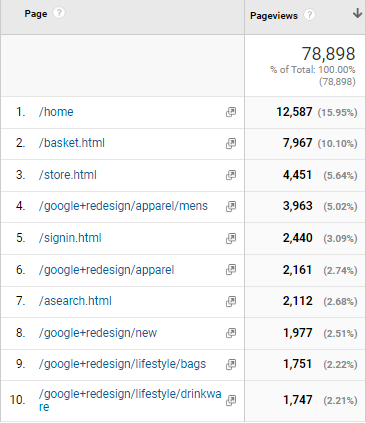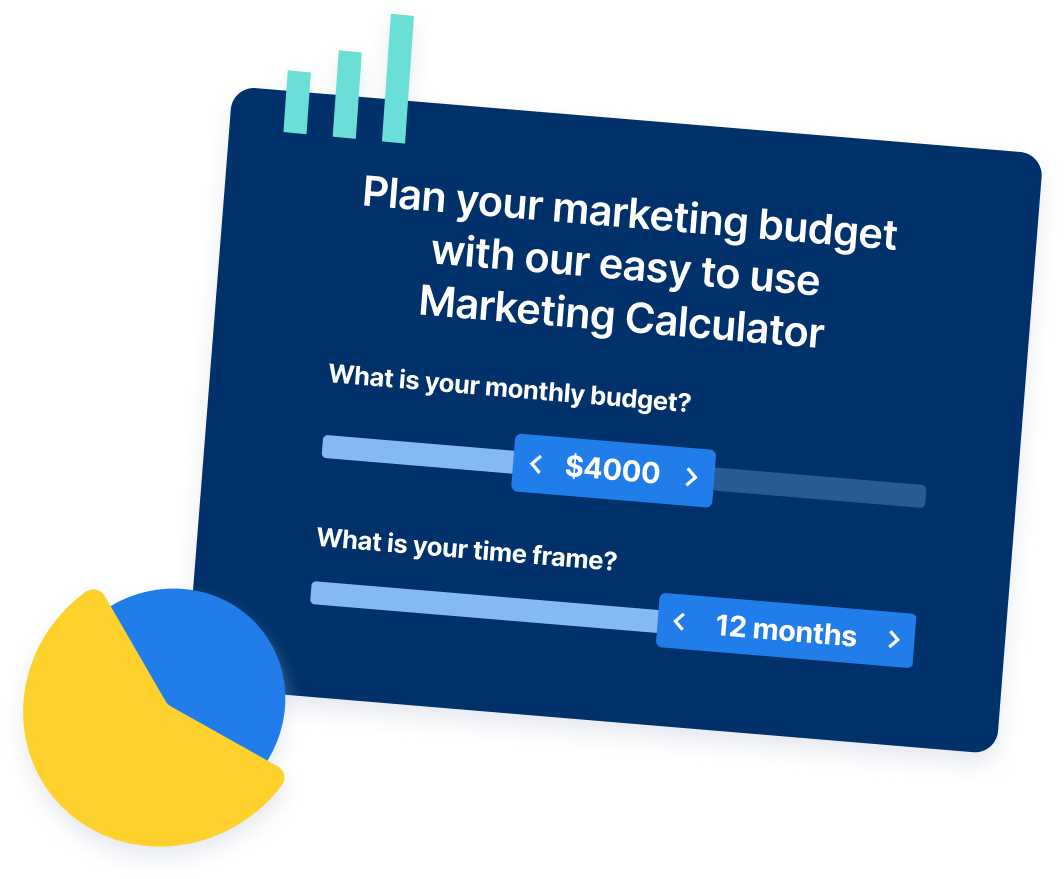-
 Published: Jul 5, 2023
Published: Jul 5, 2023
-
 7 min. read
7 min. read
-
 Abby Fields
Abby Fields Branded Content Specialist
Branded Content Specialist
- Abby is a data-driven content marketer with certifications in inbound marketing and content marketing. She’s written hundreds of articles covering digital marketing topics — a few of her specialties include first-party data, marketing and data analytics, marketing strategy optimization, and SEO. When she isn’t writing or optimizing content, Abby loves to spend time reading the latest mystery novel, having movie marathons with lots of snacks, and jamming out to Shania Twain.

What is prescriptive analytics?
Prescriptive analytics is the practice of analyzing data to provide recommendations for what your company can do next to improve your marketing results.
The best way to drive better results with your marketing is by analyzing the results from your strategies. That’s where data analytics comes into play.
On this page, we’ll dive into the ins and outs of prescriptive analytics, which helps you optimize your marketing strategies to drive more revenue in the future.
Keep reading to learn more about this essential marketing technique, including:
- What is prescriptive analytics?
- How prescriptive analytics works
- How does prescriptive analytics compare to other types of analytics?
- Advantages of prescriptive analytics
- Examples of prescriptive analytics
And don’t forget to sign up for our newsletter, Revenue Weekly, for even more data-driven marketing tips to maximize your revenue!
Key takeaways
- Prescriptive analytics is the practice of analyzing data to provide recommendations for what your company can do next to improve your marketing results
- It uses AI and machine learning to help gather actionable insights from your data that you can use to make improvements in your processes and strategies
- When used effectively, it can help you implement data-backed decisions that improve your return on investment (ROI)
- Examples of prescriptive data analytics are lead scoring, content creation, product and service improvement, and email marketing
Don’t miss our Marketing Manager Insider emails!
Join 200K smart marketers for the hottest marketing news and insights in your inbox.
Inline Subscription Form
“*” indicates required fields


What is prescriptive analytics?
Prescriptive analytics is the practice of analyzing data to provide recommendations for what your company can do next to improve your marketing results. In other words, it enables you to analyze the results of your marketing strategies and identify your next steps to optimize your campaigns to drive more revenue for your company.
How prescriptive analytics works
So, now that you know the answer to the question, “what is prescriptive analytics,” let’s explore how it works.
Prescriptive analytics attempts to answer the question “what do we do now?” or “how do we get to this point?”
It usually utilizes artificial intelligence (AI) and machine learning to interpret and understand data to gather actionable insights.
Prescriptive analytics can also work with another type of data analytics, predictive analytics, to better predict future trends that can help you make improvements in your strategies and processes in the future.
The different types of data analytics
So, now that you know the definition of prescriptive analytics and how it works, it’s time to dive into how it compares to other types of analytics.
To answer that question, we’ll need to explain each of the four types of data analytics, which are:
1. Descriptive analytics
Descriptive analytics answers the question, “what happened?” In other words, it’s what you know from looking at your data.
Example: You notice that one of your website pages has a bounce rate of 90%.
2. Diagnostic analytics
Diagnostic analytics answers the question, “why did this happen?” With diagnostic analysis, you can determine the reason behind your campaign results.
Example: You determine that your bounce rate of 90% is likely due to a corrupted video on your webpage that fails to load for visitors.
3. Predictive analytics
Predictive analytics answers the question, “what might happen in the future?” In other words, you’ll analyze your results to predict how your results might change in time.
Example: You predict that if you leave your corrupted video on your website, your bounce rate might rise to 93%.
4. Prescriptive analytics
Prescriptive analytics answers the question, “what should we do next?” With prescriptive analysis, you determine what actions you need to take to optimize your strategies to drive better results.
Example: After analyzing your high bounce rate, you determine that your next step should be to fix your corrupted video to improve your engagement.
Advantages of prescriptive analytics
So, how can prescriptive data analysis grow your business?
Let’s take a look at three key benefits of prescriptive analytics:
1. It works with artificial intelligence (AI) to determine your best course of action
One of the best benefits of prescriptive analytics is that it works seamlessly with artificial intelligence, or AI, to help you determine your best, revenue-driving course of action to improve your strategies.
For example, marketing analytics tools take the guesswork out of data analysis by helping you track and analyze your data in easy-to-understand terms. As a result, you can identify actionable insights for your business.
Many platforms also outline the steps you can take to drive more sales and revenue.
2. It helps you make data-driven decisions
When you optimize your strategies, you want to make improvements that are proven to grow your business.
With prescriptive analysis, you can use data to inform your marketing processes, enabling you to make smarter decisions that don’t rely on guesses or gut feelings.
3. It improves your return on investment (ROI)
When you invest in marketing campaigns, you want to earn the highest ROI for your efforts. With prescriptive data analysis, this goal can become a reality.
By making smarter, data-driven marketing decisions, you can implement effective optimizations that will boost your leads, conversions, and revenue.
Bonus Read: What Is AI Analytics?
Noteworthy examples of prescriptive analytics in action
You now know the definition of prescriptive analytics, how it compares to other types of analytics, and its benefits. Are you ready to see prescriptive data analysis in action?
Here are four of our favorite prescriptive analytics examples:
1. Lead scoring
Generating leads is essential to drive conversions and sales for your company. Even more important is to generate more high-quality leads that have the potential to drive the most revenue for your business.
Prescriptive data analysis is critical in helping you predict how much revenue your leads can earn for your business. This process, known as lead scoring, uses prescriptive analytics to set a numeric value for your leads. Leads with the most points are the more valuable for your business because they are likely to convert.
As a result, you see which leads could drive the most revenue for your business, so you can focus on encouraging those leads to purchase your products or services.
2. Content creation
Prescriptive analysis helps you determine which types of content appeals to your audience the most. For example, you can analyze data from your web pages to determine which content is the most popular on your website.

These insights can help you determine which types of content your audience responds to, whether it’s videos about your services or blog posts about how to use your products.
You can then create more content your audience loves, boosting your brand awareness and engagement.
3. Product and service improvement
Continually improving your products and services to ensure your customers and clients have the best experience is essential for improving your brand loyalty.
With prescriptive data analysis, you can survey your customers and ask for feedback to better understand how your audience feels about your products and services.
You can then analyze this data to identify commonalities and trends. For example, you might determine that most of your customers think your products should have a longer shelf life.
As a result, you can improve your products’ shelf life to ensure the best experience for your customers.
4. Email marketing
Sending emails to your prospects and current customers is one of the best ways to stay connected with your audience and nurture your leads toward conversion.
And prescriptive analysis can help you deliver effective email campaigns that drive more revenue for your business.
For example, you can analyze data from your previous email campaigns to identify which emails, subject lines, and calls to action (CTA) performed best with your subscribers.
You might notice that personalized emails with product recommendations based on your subscribers’ interests resulted in the most conversions. As a result, you can create more personalized email campaigns to increase sales for your business.
Our digital marketing campaigns impact the metrics that improve your bottom line.
See Our Approach
$10 billion

24 million

7.14 million
Get started with prescriptive analytics today
At WebFX, we know that it’s not easy to analyze your marketing results and identify the next steps you should take to boost your revenue.
That’s why we offer completely done-for-you marketing analytics services. Our award-winning team will take care of monitoring your campaign, analyzing your results, and making revenue-driving optimizations while you focus on running your business.
Chat with us today by calling 888-601-5359 or contact us online to learn more about how our analytics agency can help your business grow!
-
 Abby is a data-driven content marketer with certifications in inbound marketing and content marketing. She’s written hundreds of articles covering digital marketing topics — a few of her specialties include first-party data, marketing and data analytics, marketing strategy optimization, and SEO. When she isn’t writing or optimizing content, Abby loves to spend time reading the latest mystery novel, having movie marathons with lots of snacks, and jamming out to Shania Twain.
Abby is a data-driven content marketer with certifications in inbound marketing and content marketing. She’s written hundreds of articles covering digital marketing topics — a few of her specialties include first-party data, marketing and data analytics, marketing strategy optimization, and SEO. When she isn’t writing or optimizing content, Abby loves to spend time reading the latest mystery novel, having movie marathons with lots of snacks, and jamming out to Shania Twain. -

WebFX is a full-service marketing agency with 1,100+ client reviews and a 4.9-star rating on Clutch! Find out how our expert team and revenue-accelerating tech can drive results for you! Learn more
Try our free Marketing Calculator
Craft a tailored online marketing strategy! Utilize our free Internet marketing calculator for a custom plan based on your location, reach, timeframe, and budget.
Plan Your Marketing Budget

Proven Marketing Strategies

Proven Marketing Strategies
Try our free Marketing Calculator
Craft a tailored online marketing strategy! Utilize our free Internet marketing calculator for a custom plan based on your location, reach, timeframe, and budget.
Plan Your Marketing Budget
What to read next





